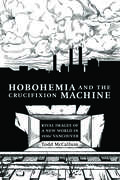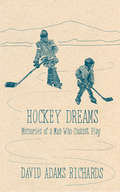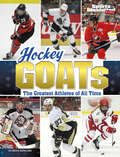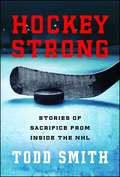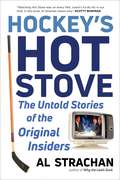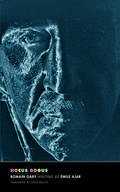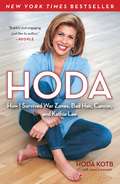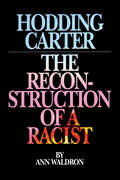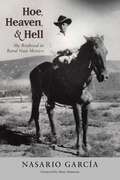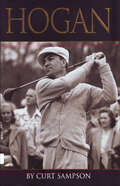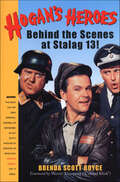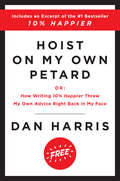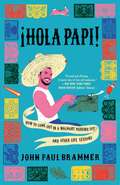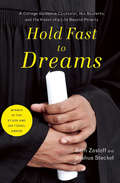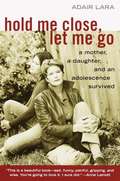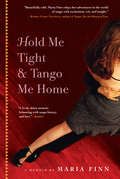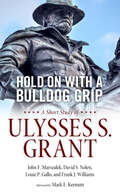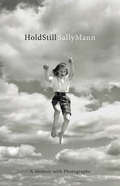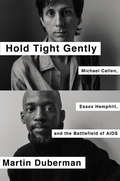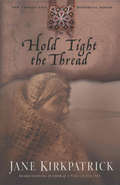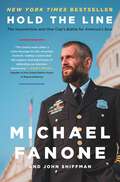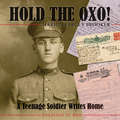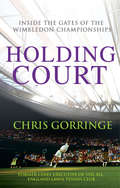- Table View
- List View
Hobohemia and the Crucifixion Machine: Rival Images of a New World in 1930s Vancouver
by Todd MccallumIn the early years of the Great Depression, thousands of unemployed homeless transients settled into Vancouver’s “hobo jungle.” The jungle operated as a distinct community, in which goods were exchanged and shared directly, without benefit of currency. The organization of life was immediate and consensual, conducted in the absence of capital accumulation. But as the transients moved from the jungles to the city, they made innumerable demands on Vancouver’s Relief Department, consuming financial resources at a rate that threatened the city with bankruptcy. In response, the municipality instituted a card-control system—no longer offering relief recipients currency to do with as they chose. It also implemented new investigative and assessment procedures, including office spies, to weed out organizational inefficiencies. McCallum argues that, threatened by this “ungovernable society,” Vancouver’s Relief Department employed Fordist management methods that ultimately stripped the transients of their individuality. Vancouver’s municipal government entered into contractual relationships with dozens of private businesses, tendering bids for meals in much the same fashion as for printing jobs and construction projects. As a result, entrepreneurs clamoured to get their share of the state spending. With the emergence of work relief camps, the provincial government harnessed the only currency that homeless men possessed: their muscle. This new form of unfree labour aided the province in developing its tourist driven “image” economy, as well as facilitating the transportation of natural resources and manufactured goods. It also led eventually to the most significant protest movement of 1930s’ Canada, the On-to-Ottawa Trek. Hobohemia and the Crucifixion Machine explores the connections between the history of transiency and that of Fordism, offering a new interpretation of the economic and political crises that wracked Canada in the early years of the Great Depression.
Hockey Dreams: Penguin Modern Classics Edition
by David Adams RichardsWith a voice as Canadian as winter, David Adams Richards reflects on the place of hockey in the Canadian soul.The lyrical narrative of Hockey Dreams flows from Richards' boyhood games on the Miramichi to heated debates with university professors who dare to back the wrong team. It examines the globalization of hockey, and how Canadians react to the threat of foreigners beating us at "our" game.Part memoir, part essay on national identity, part hockey history, Hockey Dreams is a meditation by one of Canada's finest writers on the essence of the game that helps define our nation.From the Trade Paperback edition.
Hockey GOATs: The Greatest Athletes of All Time (Sports Illustrated Kids: GOATs)
by Bruce BerglundHow do you pick hockey’s GOATs? Wayne Gretzky and Hayley Wickenheiser get a lot of praise. But is Dominik Hašek the greatest goalie? And what about the constant Stanley Cup winners the Montreal Canadiens? It comes down to stats, history, and hunches. Read more about some of the legends of hockey and see if you agree that they’re the greatest of all time.
Hockey Strong: Stories of Sacrifice from Inside the NHL
by Todd SmithFor the casual enthusiast and hockey fanatic alike comes a collection of essays and photographs celebrating the grit and dedication of hockey players to withstand injury and hardship to play the sport they love.Based on the author's interviews with key figures and capturing the inside stories of superstars old and new, Hockey Strong is one of a kind: an exploration of the long, dangerous, and often arduous journey of an NHL player. Packed with intimate interviews, exclusive photographs, and iconic moments, it's a beautifully designed celebration of one of the toughest sports in the world, and the hearts of the athletes who play it. Featuring figures like Kris Draper, Shjon Podein, Craig Berube, Joey Kocur, Rick Tocchet, Chris Nilan, and even the trainer for the 1980 Winter Olympics USA team, Todd Smith provides unprecedented access to the stories behind famous hits, injuries, and fights, while also revealing the human drive and brotherhood that propels such players forward. With a particular focus on the Original Six franchises of the NHL, Smith interviews players young and old from across North America, and illustrates hockey's broad appeal to new and lifelong fans. Unique in its content and design, and appealing to all generations of fans, this is the perfect gift for both the passionate fanatic and the casual follower of hockey.
Hockey's Hot Stove: The Untold Stories of the Original Insiders
by Al StrachanStories from behind the scenes of one of hockey&’s longest running and most popular broadcasts, Hockey Night in Canada&’s Satellite Hot Stove, from an insider who&’s seen it all.For more than twenty years, hockey fans tuned in during intermission on Saturday nights to watch one of the most popular segments in the game&’s long broadcasting history. They&’d hear news from around the league, the latest rumours and gossip, and—of course—some of the most controversial opinions of the day. No, we&’re not talking about Coach&’s Corner. The Satellite Hot Stove was a revolutionary show for talking about the game we love. Here, during the second intermission of the first game of every Hockey Night in Canada broadcast, pundits, and insiders would convene in studios across North America—in arenas and other locales—to discuss the biggest topics. Hot Stove was the best place to get news, opinions, and a good laugh. And Al Strachan was in the middle of it all. A bestselling author and award-winning sports journalist, he has been writing and talking about hockey for more than forty years. As a regular TV pundit on Hot Stove, he witnessed the most exciting and talked-about episodes in the modern game. And more than once, his unfiltered, say-it-as-it-is style added controversy of its own, too. In this new book, he relives the best stories of his long career, from working with some of the biggest personalities, on and off the ice, to the hijinks that went on behind the cameras. From embarrassing himself in front of Scotty Bowman, to cooking up a plan with Wayne Gretzky to save hockey, and frank conversations with Ken Dryden and hockey&’s elite, Hockey&’s Hot Stove delivers all new hockey stories you won&’t hear anywhere else.
Hocus Bogus (The Margellos World Republic of Letters)
by David Bellos Romain GaryBy the early 1970s, Romain Gary had established himself as one of France's most popular and prolific novelists, journalists, and memoirists. Feeling that he had been typecast as "Romain Gary," however, he wrote his next novel under the pseudonym Émile Ajar. His second novel written as Ajar,Life Before Us, was an instant runaway success, winning the Prix Goncourt and becoming the best-selling French novel of the twentieth century. The Prix Goncourt made people all the keener to identify the real "Émile Ajar," and stressed by the furor he had created, Gary fled to Geneva. There,Pseudo, a hoax confession and one of the most alarmingly effective mystifications in all literature, was written at high speed. Writing under double cover, Gary simulated schizophrenia and paranoid delusions while pretending to be Paul Pawlovitch confessing to being Émile Ajar--the author of books Gary himself had written. InPseudo, brilliantly translated by David Bellos asHocus Bogus, the struggle to assert and deny authorship is part of a wider protest against suffering and universal hypocrisy. Playing with novelistic categories and authorial voice, this work is a powerful testimony to the power of language--to express, to amuse, to deceive, and ultimately to speak difficult personal truths.
Hoda: How I Survived War Zones, Bad Hair, Cancer, and Kathie Lee
by Hoda KotbSHE'S JUST LIKE THE REST OF US : overstuffed purse, always losing keys, high-maintenance hair, snack guilt after an evening binge. But she's something different, too. Hoda Kotb grew up in two cultures--one where summers meant playing at the foot of the ancient pyramids and another where she had to meet her junior prom date at the local 7-Eleven to spare them both the wrath of her conservative Egyptian parents. She's traveled the globe for network television, smuggling videotapes in her shoes and stepping along roads riddled with land mines. She's weathered the devastation of Hurricane Katrina, and a personal Category 5 as well: divorce and breast cancer in the same year. And if that's not scary enough, she then began cohosting the fourth hour of Today with Kathie Lee Gifford. (Oh, c'mon, KLG! That's funny . . . put down the huge pour of Chardonnay and laugh with us.) HODA reads just like Hoda--light, funny, positive, and positively inspiring.
Hodding Carter: The Reconstruction of a Racist
by Ann WaldronUsing his little daily paper to battle for equality before the law and an end to the mistreatment of black people, Hodding Carter took on the power structure of the state of Mississippi. Castigated by politicians, denounced by his fellow editors, threatened with economic reprisal and physical violence, he drew the wrath of everyone from the country club to the crossroads store. What kind of man was this who stuck to his guns for what he believed, in the face of anger and vitriol, destestation and denuciation? Ann Waldron tells the story of a colorful, complex, combative man who in his college years was an outspoken white supremacist, but later changed his mind, spending the bulk of his life advocating for racial justice and finding himself on the unpopular sides of many political and social issues. No uncritical eulogy, this book re-creates the passionate life, public and private, of a flawed but authentic American hero.
Hoe, Heaven, and Hell: My Boyhood in Rural New Mexico
by Nasario GarcíaWhen Nasario García was a boy in Ojo del Padre, a village in the Rio Puerco Valley northwest of Albuquerque, he grew up the way rural New Mexicans had for generations. His parents built their own adobe house, raised their own food, hauled their water from the river, and brought up their children to respect the old ways. In this account of his boyhood García writes unforgettably about his family&’s village life, telling story after story, all of them true, and fascinating everyone interested in New Mexico history and culture.
Hog Wild: The Autobiography of Frank Broyles
by James Bailey Frank Broyles"Frank, you're more controversial than you think," one of them said. "Don't sell yourself short, Frank. You created a new word right there on national television.
Hogan
by Curt SampsonThis updated edition of a NEW YORK TIMES best seller includes a final chapter, which chronicles the last years of his life and examines his enduring legacy. Included are quotes and tributes from many of golf's greats such as Byron Nelson and a perceptive assessment of the life and legend of the man who may have been the greatest golfer ever-Ben Hogan.
Hogan's Heroes: Behind the Scenes at Stalag 13!
by Brenda Scott RoyceAn insider’s look at the surprisingly successful, perennially popular classic 1960s sitcom set in a prisoner-of-war camp in World War II Germany.If your fondest TV memories involve the POWs of Stalag 13 cleverly outwitting their captors, Schultz stammering “I know nothing!” and Hochstetter threatening to send everyone to the Russian front, then this is the book for you. This fun and informative book takes you behind the scenes of the classic 1960s sitcom to reveal:the story behind the creation, production, and eventual cancellation of the seriesthe controversy surrounding the show’s unlikely premiseinterviews with many of the show’s stars and crewbiographies of the stars and supporting actorsa detailed guide to each of the 168 episodesa guide to collecting Hogan’s memorabilia and more . . . Hogan’s Heroes is more popular now than ever before, especially in Germany, where it has become a surprising cult hit. In this book, most of the show’s stars and behind-the-scenes personnel share their memories and reflect on the series’ enduring popularity.
Hoist on My Own Petard
by Dan HarrisI wrote a memoir about a fidgety, skeptical newsman who reluctantly becomes a meditator to deal with his issues – and in the process of publishing it, I occasionally, to my embarrassment, found myself failing to practice what I preach. I was kind of like a dog that soils the rug, and the universe kept shoving my face into it. In 2014, Dan Harris published his memoir 10% Happier. The book—which describes his reluctant embrace of meditation after a drug problem, an on-air freak-out, and an unplanned "spiritual" journey—became an instant bestseller and Dan, to his own surprise, became a public evangelist for mindfulness. Hoist on My Own Petard is the story of what happens to Dan Harris after the runaway success of his memoir and the lessons he had to (re)learn in the process.
Hola Papi: How to Come Out in a Walmart Parking Lot and Other Life Lessons (A Must-Read Memoir)
by John Paul BrammerLGBTQ advice columnist John Paul Brammer writes a &“wise and charming&” (David Sedaris) memoir-in-essays chronicling his journey from a queer, mixed-race kid in America&’s heartland to becoming the &“Chicano Carrie Bradshaw&” of his generation. &“A master class of tone and tenderness.&” —The New York Times Book Review (Editors&’ Choice) &“Should be required reading.&” —Los Angeles TimesThe first time someone called John Paul (JP) Brammer &“Papi&” was on the gay hookup app Grindr. At first, it was flattering; JP took this as white-guy speak for &“hey, handsome.&” But then it happened again and again…and again, leaving JP wondering: Who the hell is Papi? Soon, this racialized moniker became the inspiration for his now wildly popular advice column &“¡Hola Papi!,&” launching his career as the Cheryl Strayed for young queer people everywhere—and some straight people too. JP had his doubts at first—what advice could he really offer while he himself stumbled through his early twenties? Sometimes the best advice comes from looking within, which is what JP does in his column and book—and readers have flocked to him for honest, heartfelt wisdom, and more than a few laughs. In this hilarious, tenderhearted book, JP shares his story of growing up biracial and in the closet in America&’s heartland, while attempting to answer some of life&’s most challenging questions: How do I let go of the past? How do I become the person I want to be? Is there such a thing as being too gay? Should I hook up with my grade school bully now that he&’s out of the closet? Questions we&’ve all asked ourselves, surely. ¡Hola Papi! is &“a warm, witty compendium of hard-won life lessons,&” (Harper&’s Bazaar) for anyone—gay, straight, and everything in between—who has ever taken stock of their unique place in the world.
Hold Fast to Dreams: A College Guidance Counselor, His Students, and the Vision of a Life Beyond Poverty
by Beth Zasloff Joshua SteckelAn &“invaluable&” memoir by a counselor who left the elite private-school world to help poor and working-class kids get into college (Washington Monthly). Winner of the Studs and Ida Terkel Award Joshua Steckel left an elite Manhattan school to serve as the first-ever college guidance counselor at a Brooklyn public high school—and has helped hundreds of disadvantaged kids gain acceptance. But getting in is only one part of the drama. This riveting work of narrative nonfiction follows the lives of ten of Josh&’s students as they navigate the vast, obstacle-ridden landscape of college in America, where students for whom the stakes of education are highest find unequal access and inadequate support. Among the students we meet are Mike, who writes his essays from a homeless shelter and is torn between his longing to get away to an idyllic campus and his fear of leaving his family in desperate circumstances; Santiago, a talented, motivated, and undocumented student, who battles bureaucracy and low expectations as he seeks a life outside the low-wage world of manual labor; and Ashley, who pursues her ambition to become a doctor with almost superhuman drive—but then forges a path that challenges received wisdom about the value of an elite liberal arts education. At a time when the idea of &“college for all&” is hotly debated, this book uncovers, in heartrending detail, the ways the American education system fails in its promise as a ladder to opportunity—yet provides hope in its portrayal of the intelligence, resilience, and everyday heroics of young people whose potential is too often ignored. &“A profound examination of the obstacles faced by low-income students . . . and the kinds of reforms needed to make higher education and the upward mobility it promises more accessible.&” —Booklist
Hold Me Close, Let Me Go: A Mother, a Daughter and an Adolescence Survived
by Adair LaraWhat does a mother do when her teenaged daughter is spinning out of control and nothing is bringing her back? Here is a searingly honest memoir of motherhood and a testament to the power of love and family. When Adair Lara's daughter Morgan turned thirteen, she was transformed, seemingly overnight, from a sweet, loving child into an angry, secretive teenager who would neither listen nor be disciplined. The author, her youngest son, Patrick, her ex-husband, Jim, and her new husband, Bill, all stepped on a five-year roller-coaster ride in which Morgan incarnated the chaos principle in torn jeans and dyed hair. Drinking, drugging, disappearing, suspicious companions, failing and cheating at school, joy riding in a stolen car--there was no variety of adolescent acting out that she didn't indulge in. For Adair Lara it became an endless sojourn at the end of her rope, a trial immensely complicated by the reappearance in her life of her aging father, a man who had abandoned his wife and seven children decades earlier. Inevitably, Morgan's misbehavior revives memories of her own headstrong adolescence, while her father's presence makes agonizingly real for her the consequences of giving up. Paradoxically, he also becomes the source of her best advice. Hold Me Close, Let Me Go is an emotionally charged, often brutally honest memoir that all parents (and anyone who was ever a teenager) will experience shocks of recognition from while reading. It imparts invaluable lessons about holding loved ones close through the roughest passages and about the power of family to overcome the most grievous obstacles. Adair Lara is a clear-eyed and eloquent witness to the complex costs and rewards of motherhood, and her book will redefine for readers their idea of what being "a good enough mother" really means.
Hold Me Tight & Tango Me Home: A Memoir
by Maria FinnA “lively” memoir of a woman finding the cure for a broken heart in the world of ballroom dancing (Booklist). Maria Finn’s husband was cheating. First she threw him out. Then she cried. Then she signed up for tango lessons. It turned out that tango had a lot to teach about understanding love and loss, about learning how to follow and how to lead, how to live with style and flair, take risks, and sort out what it is you really want. As Maria’s world begins to revolve around the friendships she makes in dance class and the milongas (social dances) she regularly attends in New York City, we discover with her the fascinating culture, history, music, moves, and beauty of the Argentine tango. With each new dance step she learns—the embrace, the walk, the sweep, the exit—she is one step closer to returning to the world of the living. Eventually Maria travels to Buenos Aires, the birthplace of tango—and finds the confidence to try romance again.
Hold On to Your Music: The Inspiring True Story of the Children of Willesden Lane
by Mona Golabek Lee CohenDiscover the inspiring illustrated true story about one girl's escape from the Holocaust to become a concert pianist against all odds, made popular by the beloved novel The Children of Willesden Lane.In pre-World War II Vienna, Lisa Jura was a musical prodigy who dreamed of becoming a concert pianist. But when enemy forces threatened the city—particularly the Jewish people that lived there—Lisa's parents were forced to make a difficult decision. They chose to send Lisa to London for safety through the Kindertransport—a rescue effort that relocated Jewish children. As Lisa yearned to be reunited with her family while living in a home for refugee children on Willesden Lane, her music became a beacon of hope for those around her.A true story of courage, survival, and determination, this compelling tribute to a gifted young girl has already touched the lives of many around the world. Originally published in 2017 for older readers, The Children of Willesden Lane has sold hundreds of thousands of copies globally; now this picture book retelling will inspire a new generation.
Hold On with a Bulldog Grip: A Short Study of Ulysses S. Grant
by John F. Marszalek Frank Williams David Nolen Louie GalloIn this new short biography of Ulysses S. Grant, leading scholars provide an accessible introduction to Grant and his legacy. Grant led Federal forces to victory in the Civil War, was the first modern American president, and authored his memoirs, which would eventually become one of the greatest books of nonfiction by an American author. The authors present a thematic exploration of Grant, providing the necessary insight to appreciate Grant and correct the myths that for too long clouded his true importance. They highlight specific moments or relationships in Grant’s life—including his connection to such key figures as Abraham Lincoln and Mark Twain—and elaborate on the more controversial elements of Grant’s legacy, such as accusations about his drinking and corruption during the Grant presidency. Not to overlook his military accomplishments, they devote time to the study of Grant’s war strategy and military career, beginning as early as his reluctant enrollment into West Point. From humble birth to tragic death, this new take on Ulysses S. Grant instills readers with a deeper understanding of the military legend’s nuanced personal history and an appreciation for the late president’s tragic and triumphant story.
Hold Still: A Memoir with Photographs
by Sally MannNATIONAL BOOK AWARD FINALISTONE OF THE BEST BOOKS OF THE YEARThe New York Times, Washington Post, The San Francisco Chronicle, Vogue, NPR, Publishers Weekly, BookPage A revealing and beautifully written memoir and family history from acclaimed photographer Sally Mann. In this groundbreaking book, a unique interplay of narrative and image, Mann's preoccupation with family, race, mortality, and the storied landscape of the American South are revealed as almost genetically predetermined, written into her DNA by the family history that precedes her. Sorting through boxes of family papers and yellowed photographs she finds more than she bargained for: "deceit and scandal, alcohol, domestic abuse, car crashes, bogeymen, clandestine affairs, dearly loved and disputed family land . . . racial complications, vast sums of money made and lost, the return of the prodigal son, and maybe even bloody murder." In lyrical prose and startlingly revealing photographs, she crafts a totally original form of personal history that has the page-turning drama of a great novel but is firmly rooted in the fertile soil of her own life.
Hold Tight Gently: Michael Callen, Essex Hemphill, and the Battlefield of AIDS
by Martin DubermanIn December 1995, the FDA approved the release of protease inhibitors, the first effective treatment for AIDS. For countless people, the drug offered a reprieve from what had been a death sentence; for others, it was too late. In the United States alone, over 318,000 people had already died from AIDS-related complications-among them the singer Michael Callen and the poet Essex Hemphill.Meticulously researched and evocatively told, Hold Tight Gently is the celebrated historian Martin Duberman's poignant memorial to those lost to AIDS and to two of the great unsung heroes of the early years of the epidemic.Callen, a white gay Midwesterner who had moved to New York, became a leading figure in the movement to increase awareness of AIDS in the face of willful and homophobic denial under the Reagan administration; Hemphill, an African American gay man, contributed to the black gay and lesbian scene in Washington, D.C., with poetry of searing intensity and introspection.A profound exploration of the intersection of race, sexuality, class, identity, and the politics of AIDS activism beyond ACT UP, Hold Tight Gently captures both a generation struggling to cope with the deadly disease and the extraordinary refusal of two men to give in to despair.
Hold Tight the Thread (Tender Ties #3)
by Jane KirkpatrickBASED ON A TRUE STORY In a land occupied by foreign powers and torn by confusion and conflict, a mother seeks to weave her family and her past into a fabric that will not tear. Their Lives Were Woven by Wars and Wilderness Places, and Tied by the Peace of Family and Faith. As the 1840s bring conflict to the Pacific Northwest's rugged Columbia Country, new challenges face Marie Dorion Venier Toupin: the wife, mother, and Ioway Indian woman who crossed the Rocky Mountains with the Astor Expedition, the first big fur trapping expedition after Lewis and Clark's. On French Prairie in the newly forming Oregon Territory, Marie strives to meet the needs of her conflict-ridden neighbors: British settlers and Americans, missionaries and disease-stricken natives, fur trappers and French Canadian farming families, and the surviving natives of the region. At the same time, as a mother, Marie must weave together the threads of an unraveling family. One daughter compares and judges as she seeks to find her place; another reaches for elusive evidence of her mother's love. Marie's memories are threatened with the emergence of a figure from the past. In the midst of this turmoil, Marie discovers an empowering spiritual truth: Unconditional love can shed light on even the darkest places in the heart.
Hold the Line: The Insurrection and One Cop's Battle for America's Soul
by John Shiffman Michael FanoneAn urgent warning about the growing threat to our democracy from a twenty-year police veteran and former Trump supporter who nearly lost his life during the insurrection of January 6th. <p><p>When Michael Fanone self-deployed to the Capitol on January 6, 2021, he had no idea his life was about to change. When he got to the front of the line, he urged his fellow officers to hold it against the growing crowd of insurrectionists—until he found himself pulled into the mob, tased until he had a heart attack, and viciously beaten with a Blue Lives Matter flag as shouts to kill him rang out. <p><p>Now, Fanone is ready to tell the full story of that fateful day, along with exploring our country’s most critical issues as someone who has had firsthand experience with many of them. A self-described redneck who voted for Trump in 2016, Fanone’s closest friend was an informant—a Black, transgender, HIV-positive woman who has helped him mature and rethink his methods as a police officer. <p><p>With his unique insight as an undercover detective and intense desire to do the right thing no matter the cost, Fanone provides a nuanced look into everything from policing to race to politics in a way that is accessible across all party lines. Determined to make sure no one forgets what happened at the Capitol on January 6th, Fanone has written a timely call to action for anyone who wants to preserve our democracy for future generations. <p> <b>New York Times Bestseller</b>
Hold the Oxo!: A Teenage Soldier Writes Home
by Marion Fargey BrookerShort-listed for the 2014 Forest of Reading - White Pine Award for Non-Fiction Canada was young during the First World War, and with as many as 20,000 underage soldiers leaving their homes to join the war effort, the country’s army was, too. Jim, at 17, was one of them, and he penned countless letters home. But these weren’t the writings of an ordinary boy. They were the letters of a lad who left a small farming community for the city on July 15, 1915, a boy who volunteered to serve with the 79th Queen’s Own Cameron Highlanders. Jim’s letters home gloss over the horrors of war, focusing instead on issues of the home front: of harvesting, training the horses, and the price of hogs. Rarely do these letters, especially those to his mother and father, mention the mud and rats, the lice and stench of the trenches, or the night duty of cutting barbed wire in no man’s land. For 95 years his letters remained in a shoebox decorated by his mother. Jim was just 18 when he was wounded and died during the Battle of the Somme. Hold the Oxo! tells the story that lies between the lines of his letters, filling in the historical context and helping us to understand what it was like to be Jim.
Holding Court
by Chris GorringeWimbledon is a paradox. While outwardly appearing the quintessential English lawn tennis club, as much a part of being British as strawberries and cream or picnics in the park, it is in fact the largest annual outside broadcast operation in the world and a multi-million pound commercial enterprise. Remarkably, an enterprise that generates its profit in just two weeks of the year. It is also something we do rather well. Which other tennis tournament in the world can describe itself as simply, "The Championships"?Chris Gorringe is the man who, for twenty-six years, made it all happen. The former chief executive, fondly referred to as "Clockwork Gorringe," has dealt with everything from the 1973 players' boycott, the McEnroe tantrums, and Middle Sunday, to the demands for equal prize money and the Olympic bid. He has witnessed some of the greatest names in the sport producing some of their most dazzling performances - from Navratilova to the Williams sisters, from Borg to Federer - while assisting with the requirements of and demands on today's high-profile professional tennis players. During his tenure, revenue increased from £58,000 in his first year, to £27m in his last. In Holding Court, he charts the unique journey of one of the country's most venerable establishments, where decisions are still made through a committee system dating back to 1868, into the modern era. For anyone who has ever been captivated by McEnroe v Borg, soaked up the atmosphere in Aorangi Park, or been intrigued by what goes on behind the scenes at SW19, Holding Court is a must-read. Wimbledon is a national institution. When play starts on the first Monday, millions of followers tune in. This book is for them.
